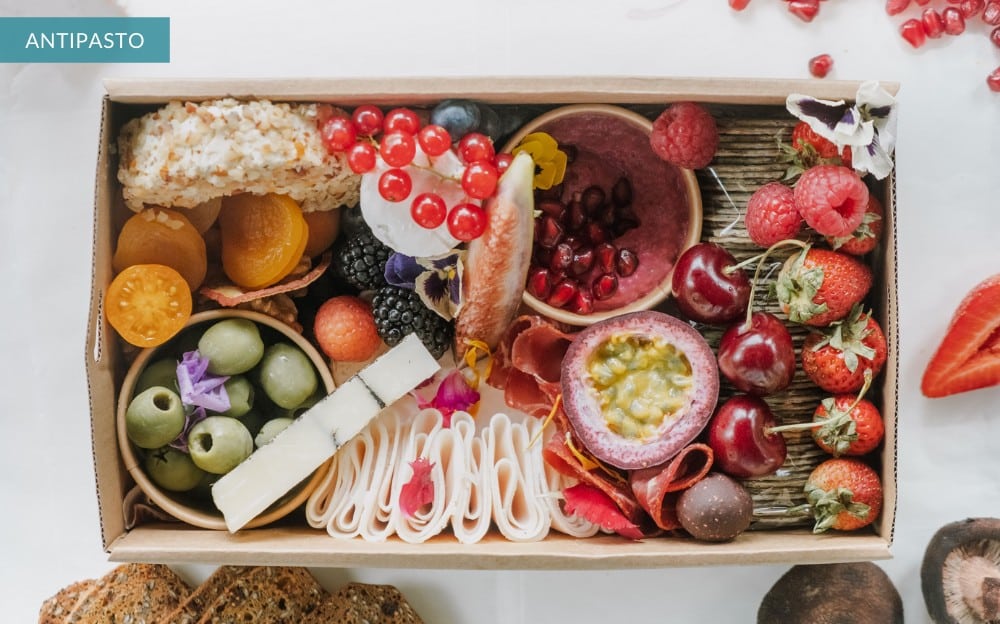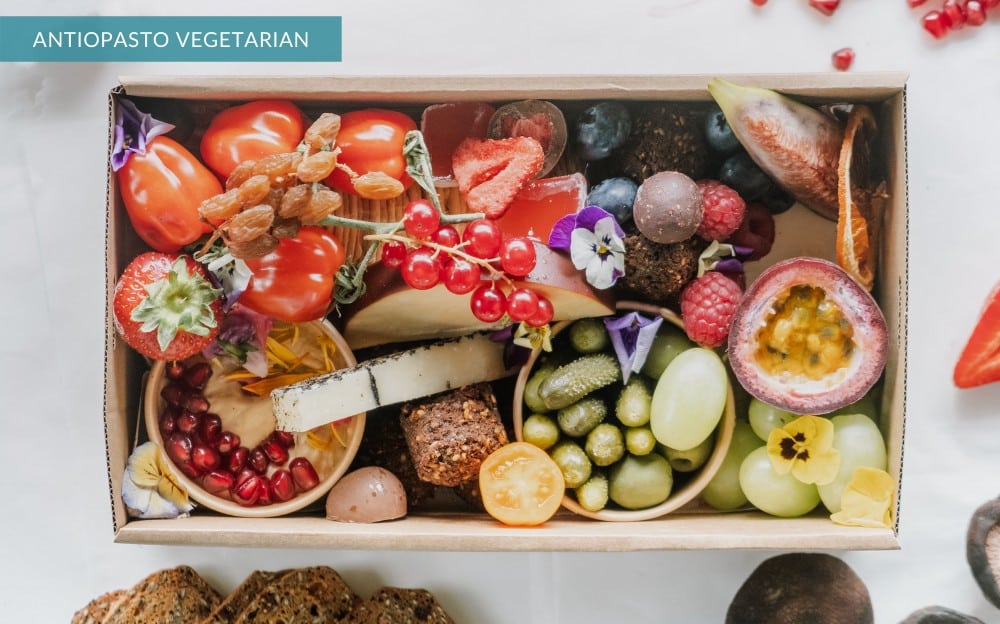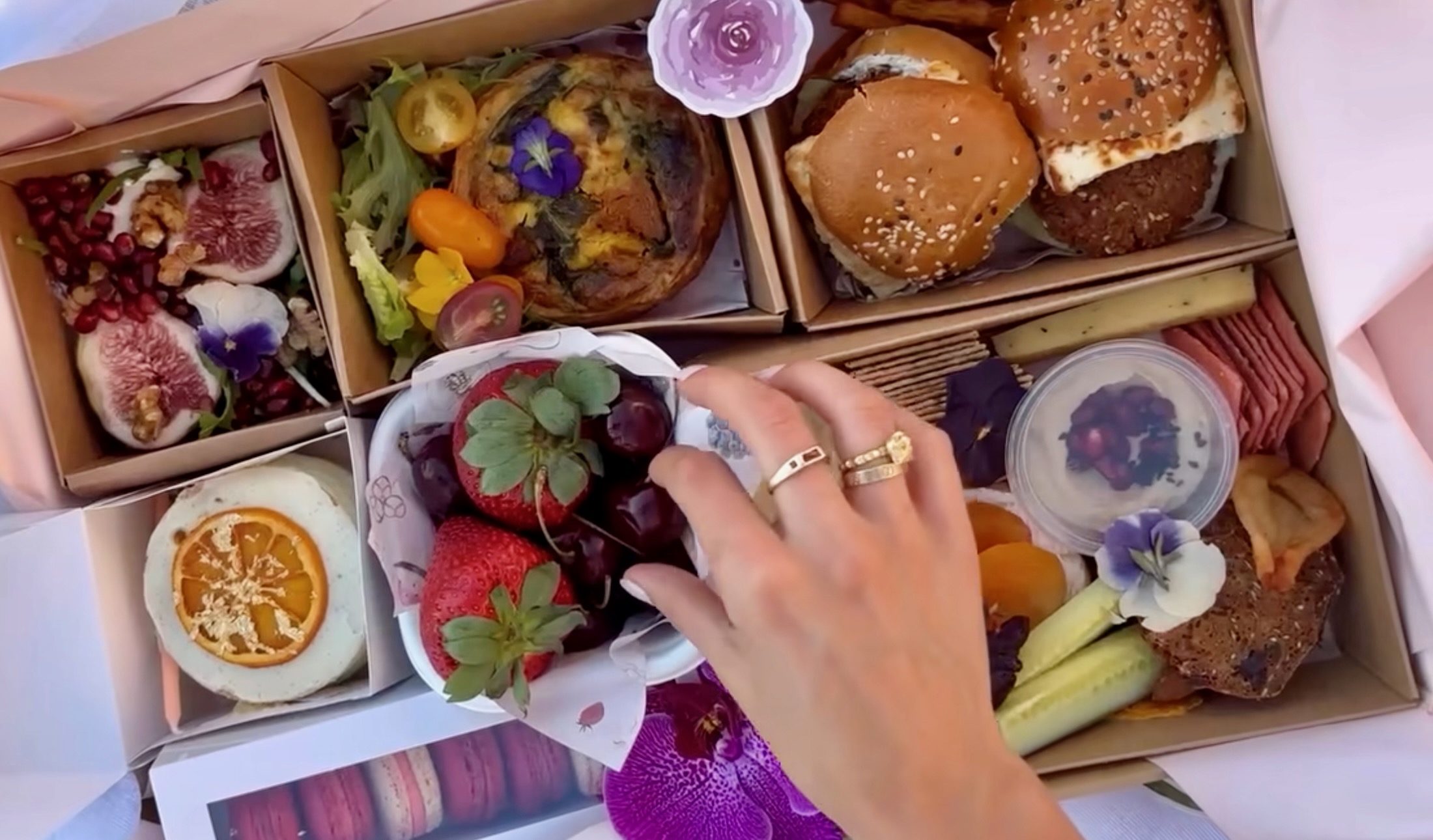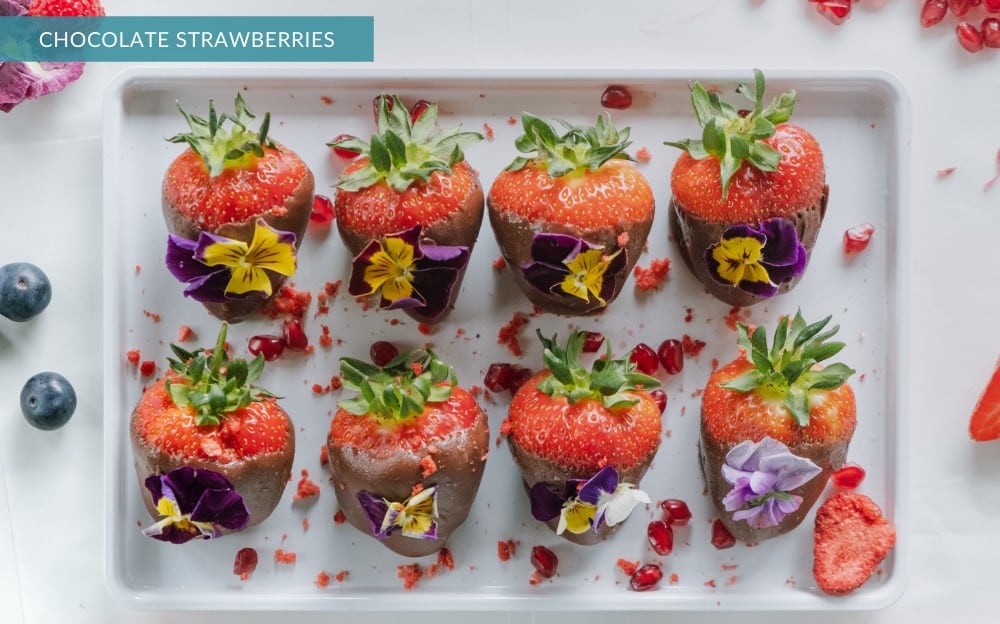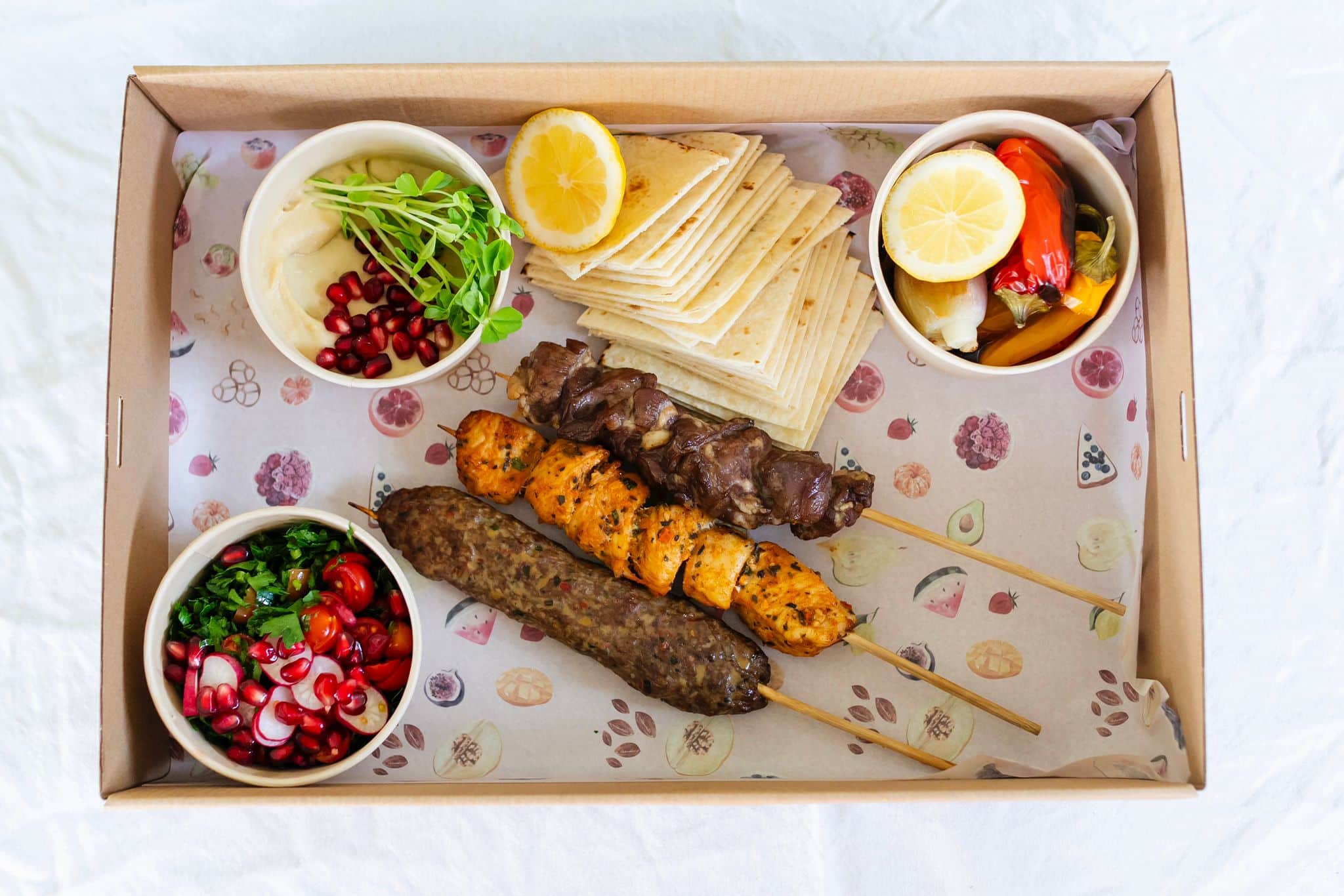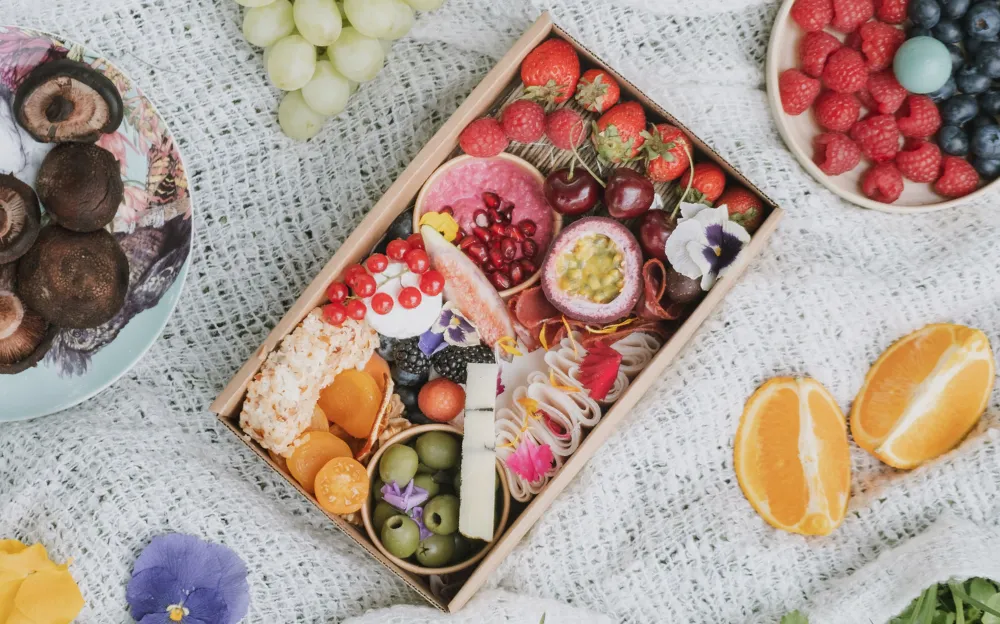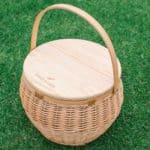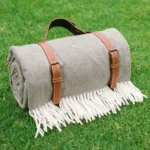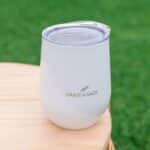Quick Links
As awesome as they are, making your own grazing boards can be overwhelming- that’s why we’ve collated our top tips for the perfect grazing board, backed up by years of picnic experience and thousands of happy cheese-loving customers.
Ingredients
Cheese
Loved by many, easy to eat and absolutely delicious, cheese is a classic go-to for grazing board creators. For your grazing board, usually, two or three cheeses are the perfect amount. For variety, you’ll want to select a range of cheeses with different flavour profiles and textures.
Hard cheeses like aged crumbled cheddar and pecorino have sharper tastes and pair well with a milder cheese such as a soft brie. Whilst cheeses with robust flavour profiles such as blue cheese and truffle cheeses tend to pair nicely with a mild, buttery smoked cheddar.
As for serving sizes, often 50g per person is enough for an appetiser- but if that won’t fit on your board, we always recommend putting out half your cheese and replenishing the board if needed.
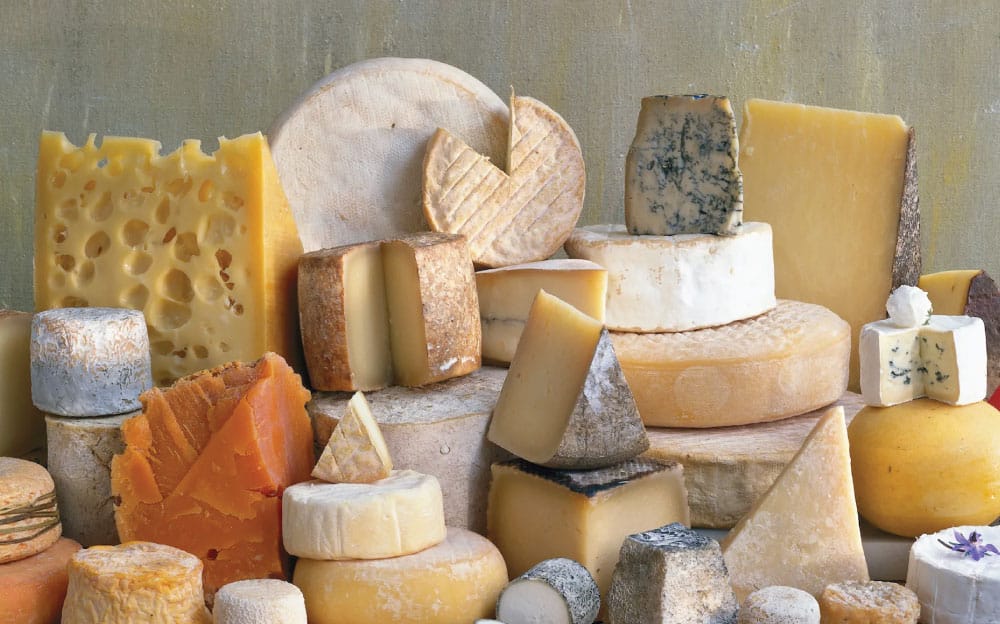
Meats
Opt for adding two types of meats. Thinly sliced deli meats are perfect for layering on a cracker with cheese, and we recommend choosing the flavour profile of your meats accordingly.
Prosciutto is a popular choice for its mild, salty flavour which pairs excellently with a variety of cheeses, whilst salami is also a classic for adding a little extra spice and meaty flavour to milder cheese varieties.
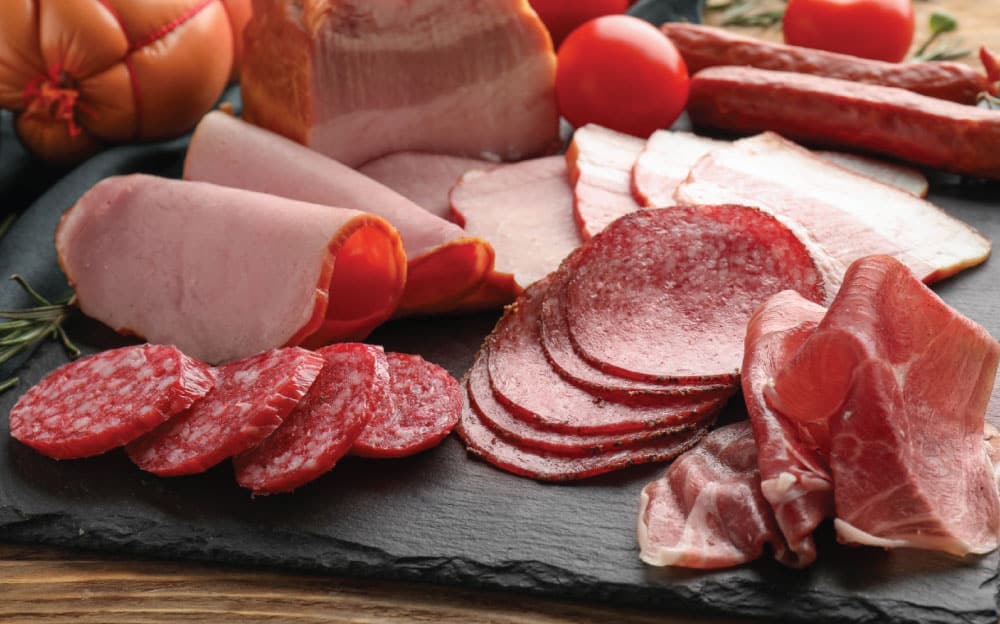
Dips, Relishes and Fruit Pastes
We often add one or two dips and a small pot of fruit paste for some extra flavour, moisture and variety.
Dips are up to personal choice, and we often pick a combination of milder flavours like hummus or avocado dip, and more robust flavours like spicy capsicum or a smoked trout dip. This way, guests can mix and match flavours with other elements of the charcuterie board.
Fruit pastes are also excellent for adding a sweet element to an otherwise very savoury board. Quince and fig pastes are both great additions in this area and are used just as an accompaniment to cheese and crackers.
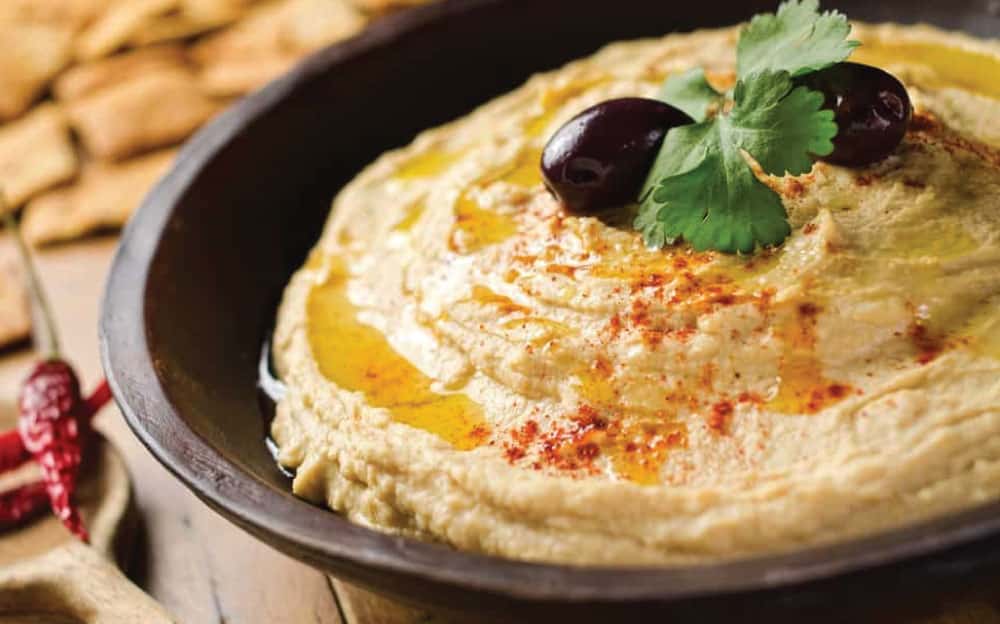
Fruits and Vegetables
Fruit and veggie selections are always best when chosen seasonally. All year round berries and grapes are a great addition, as they’re delicious and very easy to pick off the board and into your mouth! When they’re in season, figs, and apricots are also the perfect accompanying fruit to a grazing board, they’re not too juicy, don’t brown easily and compliment the flavours of meats and cheeses.
Any vegetables that can be cut into matchsticks are the perfect veggies for a grazing board. Carrots, celery, cucumber and capsicum are all delicious additives and make for great crudites. When they’re in season, radishes look stunning on a grazing board and add a peppery flavour to the mix.
And finally, whether you believe tomatoes are a fruit or a vegetable, one thing we can all agree upon is that they’re an amazing addition to a grazing board. Just like berries, they’re easy to eat and go very well with the savoury flavours on your board.
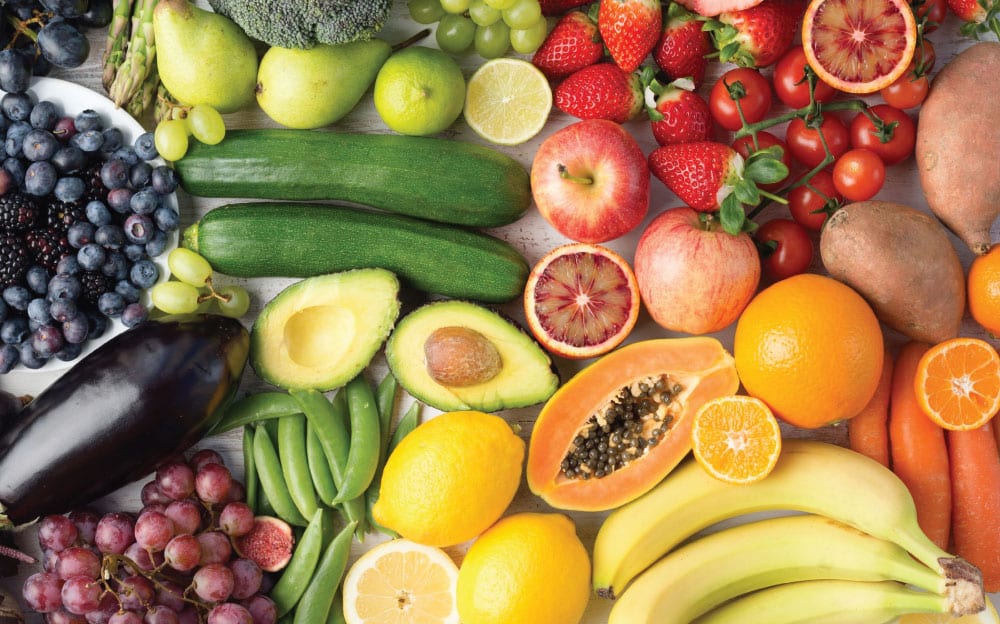
Crackers and Breads
Like everything on this list, we recommend picking two or three choices for texture and flavour variety. A classic water cracker is a staple for any grazing board with its muted flavour and great crunch. For some softness, we recommend a bread such as baguette or pita and for some flavour we recommend the dried fruit and nut crisps which provide an amazing sweetness to soft, mild cheeses.

Extras
Bite-sized extras are a great way to fill up the board and are always popular to graze on when you start to get full of meats and cheeses.
Nuts, pretzels, squares of chocolate, and dried fruits all do the job greatly.
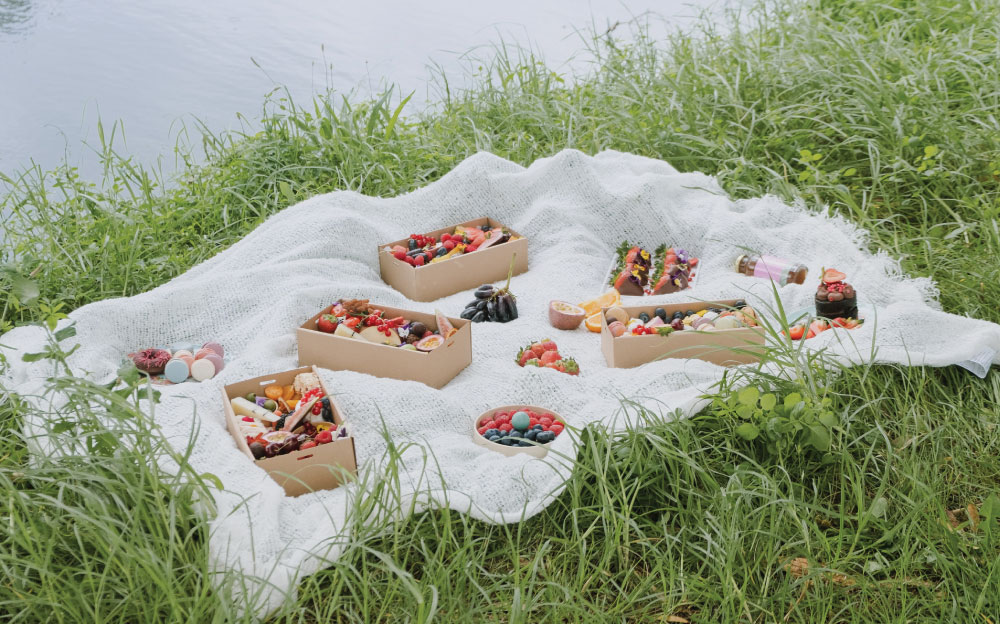
Assembly
Depending on how many cheeses you have, we like to start by dividing our boards into two or three sections with one variety of cheese in each.
For soft cheeses you may like to serve them halved or whole, but for hard cheeses you may opt for cutting bite-sized triangles or squares.
Now it’s time to add the meats. We love to fold our meats to create a fanned look, but simply placing slices messily together looks great too. For placement, we recommend placing your meat near a cheese to suggest it pairs well together- for example placing salami near a mild, hard cheese such as a smoked cheddar.
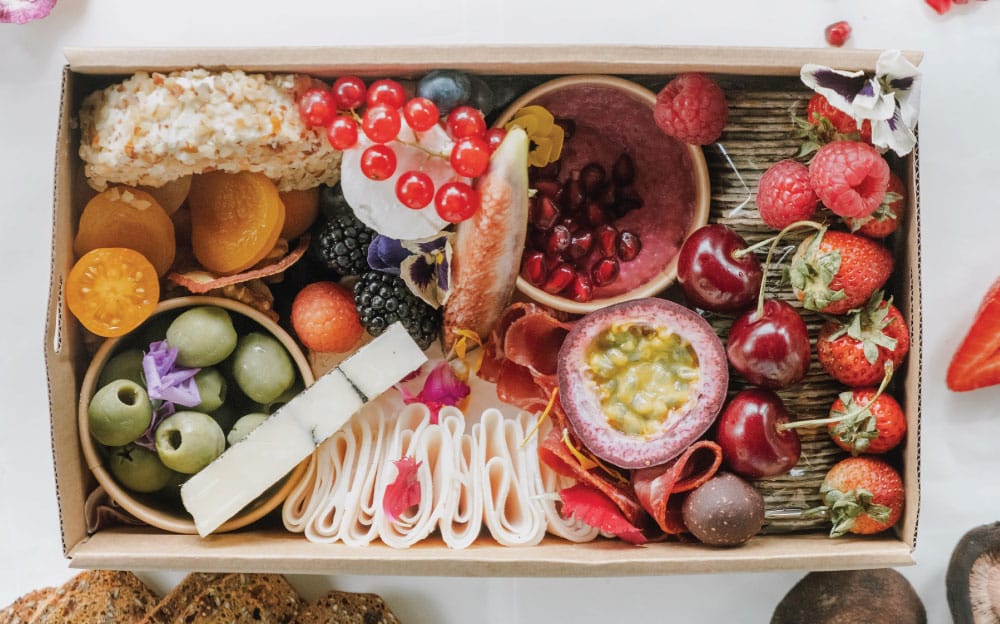
Next, we place the dips in bowls of varying size to add dimension to the board. These bowls are styled in the more bare areas of the board, so we can later arrange crackers and crudites around the bowls.
Then, we place sliced vegetables in flowing patterns around the dips, and fruits in the areas which are looking a little bare. Fruits with stems such as cherries, tomatoes and grapes we find look especially great when you leave them on the stem.
Almost done! Now we add the crackers. We like to stack or lay the crackers in swirling patterns in the empty spaces of the board. Keep them together to make sure there’s still some order to the board.
Finally, fill any empty space with your extras. You can even add fresh herbs as a lovely finishing touch.
Need some inspiration? Head over to our wonderful grazing partner’s Instagram page @grazing_garden for some styling inspo, or if you’re looking for a treat without the kitchen kerfuffle, head over to the Graze and Gaze homepage and check out some of our unforgettable picnic experiences.
